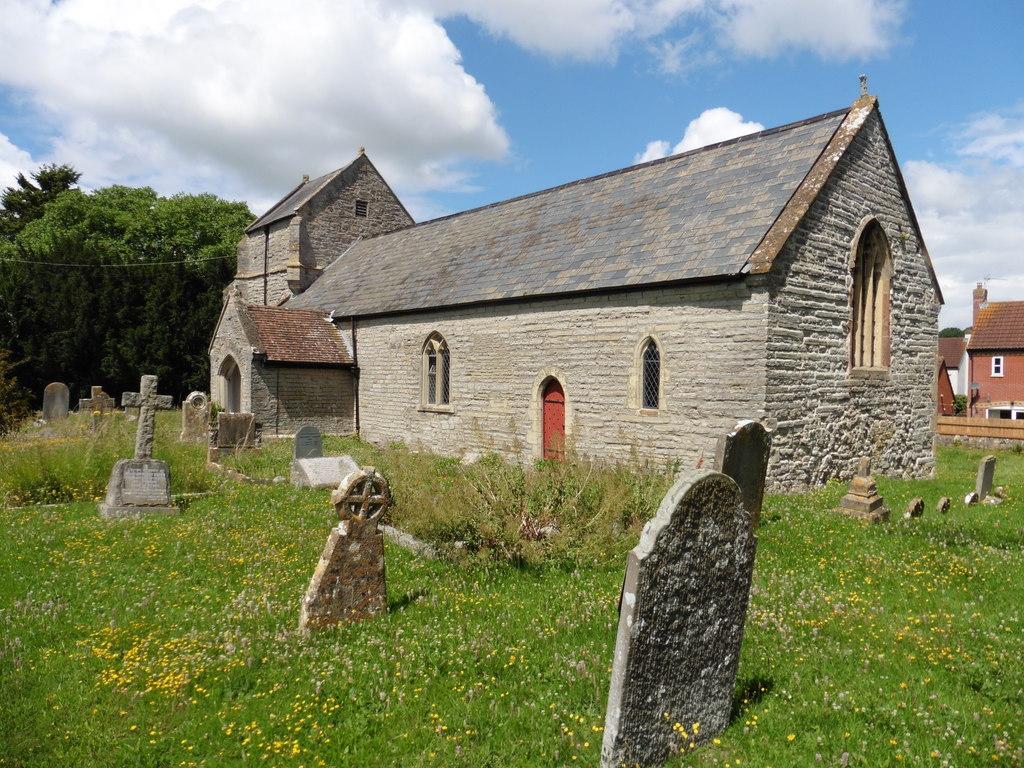Yr Eglwys Norwyaidd
Bae Caerdydd, City of Cardiff
Anaml iawn y gwelwch yng Nghymru eglwys sydd â chladin pren gwyn – ac mae gan yr Eglwys Norwyaidd stori unigryw i’w hadrodd, yn ogystal â chysylltiad ag un o hoff awduron plant y byd: Roald Dahl.

The church stands at the centre of the village where modern houses occupy the sites of farmyards and are thus cheek by jowl with ancient farmhouses.
Stawell, Somerset
In 1270 Sir Geoffrey of Stawell was given permission by the abbot of Glastonbury to have his new grandson christened in Stawell rather than in Moorlynch. This was strictly against the law, because the village was only a chapelry in an ancient parish, which included Sutton Mallet, Chilton Polden, Edington and Catcott; and baptisms, weddings and funerals should all have taken place at Moorlynch.
It is still connected with Moorlynch, but has in practice been a parish church for a very long time. The baptism at Stawell is the first reference to the church, which was probably at that time less than a century old. The tops of columns and the arches embedded in the north wall suggest that there may have been an aisle in about 1300, perhaps a private space for the Stawell family, but the floor level must have been much lower, and the whole wall looks as if it has been rebuilt.
The west tower was begun in the 15th century but perhaps proved unsafe: the nave was extended west to wrap around it and the top and gable were probably added in 1610, the date on the plaque near the top. The cover of the communion cup, was dated 1574, shows that the parish complied with the Bishop’s ruling to have the old chalice melted down in accordance with national moves to stamp out all memory of the mass, but the reformed church was hardly reformed here. In 1575 there were complaints that John Hynde, the curate, had failed to take a service two years before on St Stephen’s day, a Sunday but also Boxing Day, but stayed at home in Sutton playing cards. John Bridge, a ploughman, took the service instead, but was not very literate, having to spell the words out loud before he could read them and causing people to laugh when he had to start the Lord’s Prayer twice.
At the Bishop’s visitation in 1634 when Bishop Piers was anxious to maintain decency in worship according to the high church ideas of Archbishop Laud, the ministers seat was reported to be not decent, the pulpit not as fit as it should have been, the parish registers not kept securely; there was no book of common prayer and the windows stopped up with board. Furthermore, Henry King claimed the right to a seat in the chancel and when challenged disturbed the rest of the worshipers there and threatened to sue the wardens. About 1785, when Edmund Rack visited the church, he found that the pulpit was ‘very antique and tumbling to pieces’ and that the minister’s seat, which he called the reading desk, bore the date 1635. The wardens in 1634 had evidently done what the bishop required.
At an enquiry in 1873 one Sunday service with sermon was reported as the usual pattern of worship, with Holy Communion celebrated every six weeks. The whole building was then about to be restored. Sadly it was over restored: all the furniture was replaced, the roof entirely renewed, the windows retooled, and a new font bought. In fact not much apart from the few elegant monuments and the walls remained untouched.
Bae Caerdydd, City of Cardiff
Anaml iawn y gwelwch yng Nghymru eglwys sydd â chladin pren gwyn – ac mae gan yr Eglwys Norwyaidd stori unigryw i’w hadrodd, yn ogystal â chysylltiad ag un o hoff awduron plant y byd: Roald Dahl.
Grangetown, City of Cardiff
Mae gwaith y pensaer John Coates Carter yn gyfrinach sydd wedi ei chadw’n ddiogel. Mae ei adeiladau’n ymgorffori y Mudiad Celfyddyd a Chrefft ar ddechrau’r ugeinfed ganrif – a dywedir bod eglwys St Paul ymhlith y gorau o’i eglwysi cynnar sydd wedi goroesi.
Pontcanna, City of Cardiff
Adeiladwyd yr eglwys hon yn 1883-6 gan y pensaer J Prichard. Ei fwriad gwreiddiol oedd adeiladu eglwys ar ffurf croes, ond daeth yn amlwg bod hyn yn rhy uchelgeisiol - ac adeiladwyd tair cilfach cyntaf corff yr eglwys yn unig.